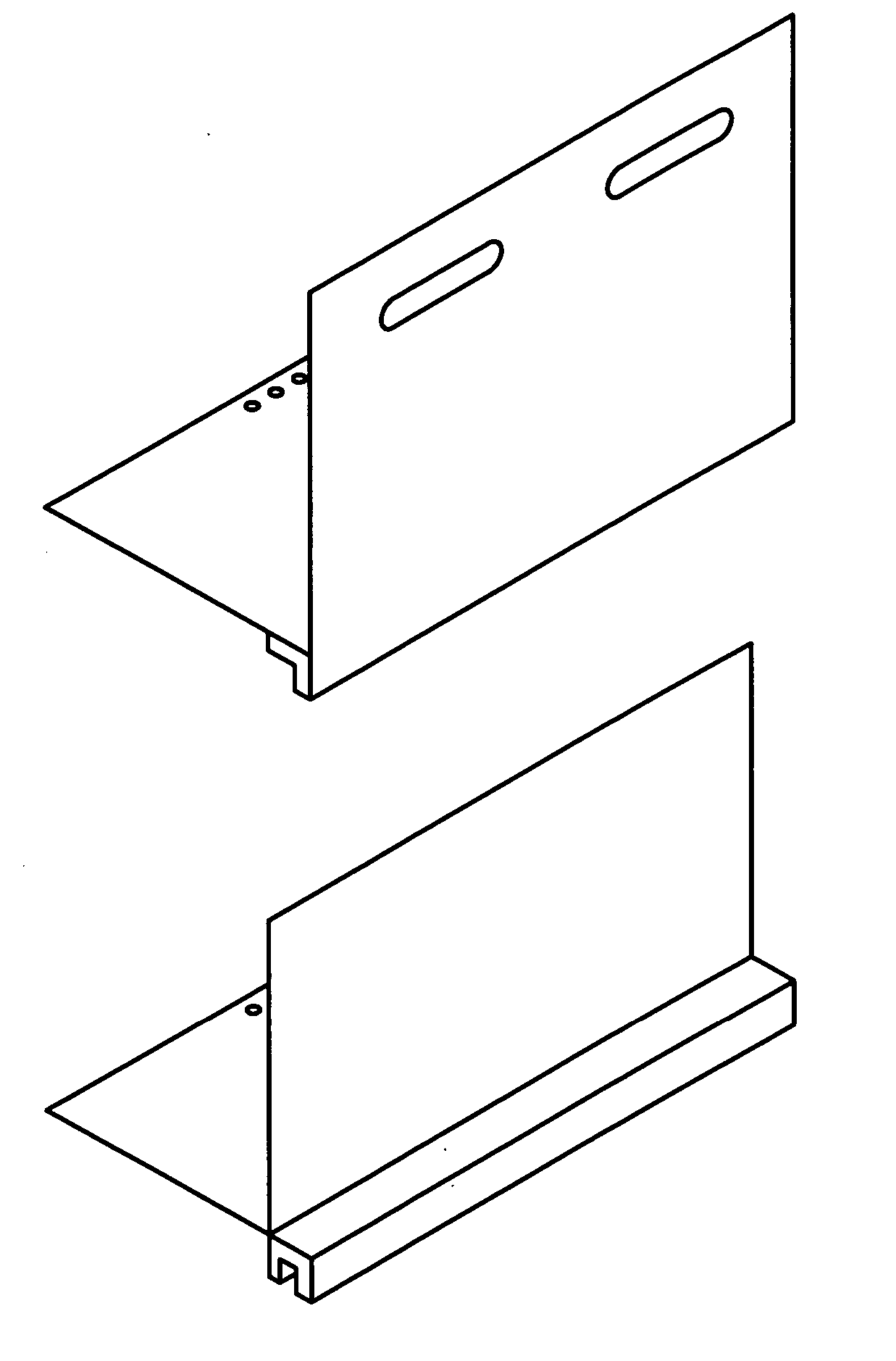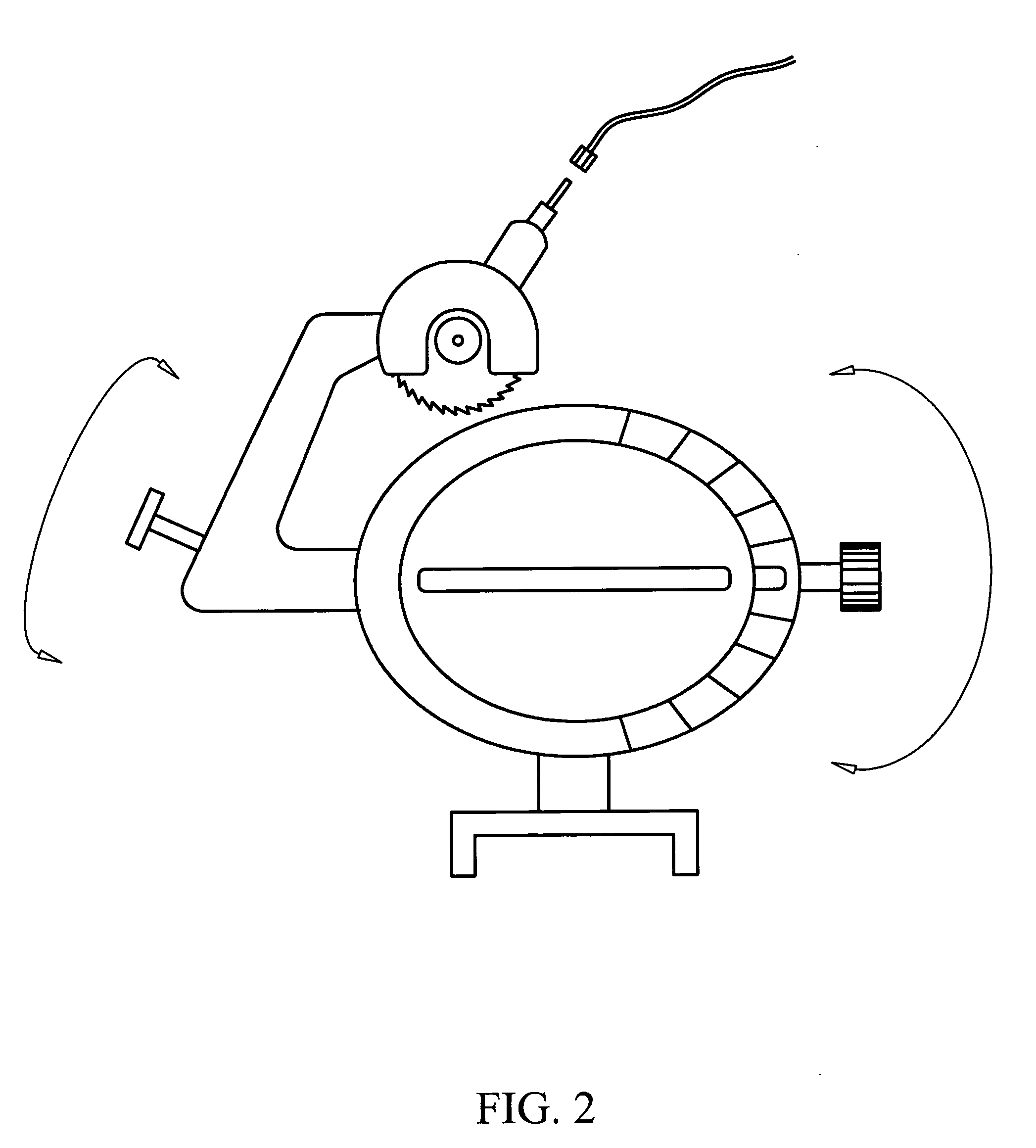An alarming number of construction site accidents are due to falls from pitched roofs by workmen, or injuries sustained by workmen when roofing materials (
shingles, felt, nails, flashing, compounds, sealants, and the like) or tools (hammer, nail guns, water jugs, and the like) fall from a roof onto workers or passersby below.
One of the basic difficulties in roof work is transporting the materials up to the roof and storing them there until needed.
Thus, large quantities of
shingles, tiles,
slates, or the like, may need to be stored on the roof prior to installation.
If a fellow workman or passerby is below when such a large amount of material falls, serious injury or even death can occur.
In addition, although probably less hazardous, workers and passersby below are also in danger of serious injury from falling tools, hammers, and smaller amounts of roofing materials and the like.
In addition to causing stress on the body, such a work environment is inefficient, as such long reaches increase the time needed to install
shingles and more readily fatigue the roofer.
Moreover, extended reaches may put the roofer at increase risk of falling due to loss of balance and the like.
Roofing materials and tools may be more likely to fall off a roof if a roofer has to stretch to reach them.
Such a primitive technique, commonly used, provides very little purchase for the roofer or materials to rest upon.
In addition, it may take time at the jobsite for the roofer to secure such
scrap lumber,
cut it to size, measure for nail spacing, and install.
However, most, if not all, of these attempts have failed in one or more ways, and none of these patented invention appear to have been commercially successful or readily available in the marketplace.
Most of these schemes utilize unnecessarily complicated apparatus, which is too costly for the average roofer to afford, to heavy to lift to the jobsite, and to cumbersome to work with.
The problem with the Eisenmenger
system is that it requires that a ladder with specialized fittings first be hauled up to the roof and secured before the platform can be installed.
However, it appears that Bitner is limited to a device for supporting a walk-board or
plank, and does not explicitly provide support for ladders, tools, supplies, or roofing materials.
In addition, the Bitner device utilizes a fairly complex and expensive screw-jack leveling
system to provide infinite adjustment of angle.
While the screw-jack
system may provide more levels of adjustment, it does so at the expense of added cost and complexity.
Moreover, the screw-jack of Bitner does not appear to be sufficient to support large loads (e.g., square of shingles).
As the pad is made entirely of
foam rubber, it may be difficult to grip (no handles).
Moreover, the foam pad does not provide storage for small items such as nails or tools.
In addition to the above problems in the Prior Art, injuries have occurred when ladders and scaffolding set up for roof and other work are not properly secured and as a result, fall down.
However, oftentimes a convenient and easy way to tie off a ladder (e.g., to a gutter) is not present, particularly with regard to roofing work.
An aluminum ladder flying off a construction
truck can cause great bodily injury or even death on a crowded superhighway.
Such dangers
pose huge liabilities for construction companies, which may be ultimately responsible for the actions of their employees.
Moreover, securing any load to a vehicle present safety problems.
However contractors and homeowners have relied upon straps, ropes and even strings, to secure loads to their vehicles, with limited success and sometimes disastrous results.
Many contractors will leave ladders entirely unsecured on ladder racks, or use only a token string or
rope to secure them.
In addition to being unsafe, ropes and strings are difficult to tie and untie.
Straps (since or
ratchet) are one solution, however, they are generally provided with large rubber hooks, which may slip on a ladder or luggage rack or may be difficult to secure.
However, the YAKIMA® and THULE® racks may be highly specialized in their purposes and thus require an enormous amount of accessories in order to secure various items.
Moreover, accessories for one rack (e.g., YAKIMA®, which uses round tubing) may not fit another rack (e.g., THULE®, which uses square tubing).
Luggage racks supplied with cars generally are of little use and provide few or no places for tie-downs or the like.
However, there is little precision in
depth of cut with a knife, and in addition, such a
cut can be laborious and difficult.
Too deep a
cut may create roof leaks.
Power tools are generally not well suited to
cutting shingles.
Most are heavy and require electrical power.
In addition, large power tools present a
hazard to workers below if they fall off the roof.
 Login to View More
Login to View More 


